

PERMANENT COLLECTION
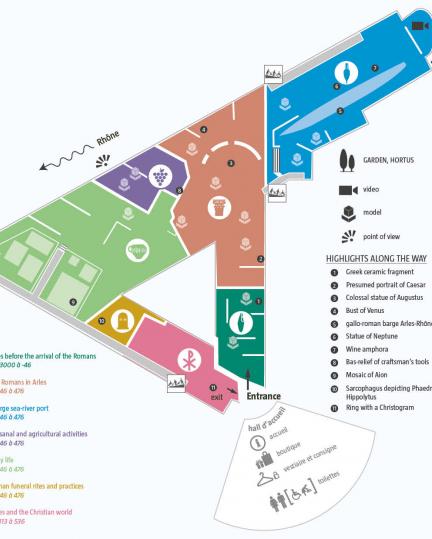
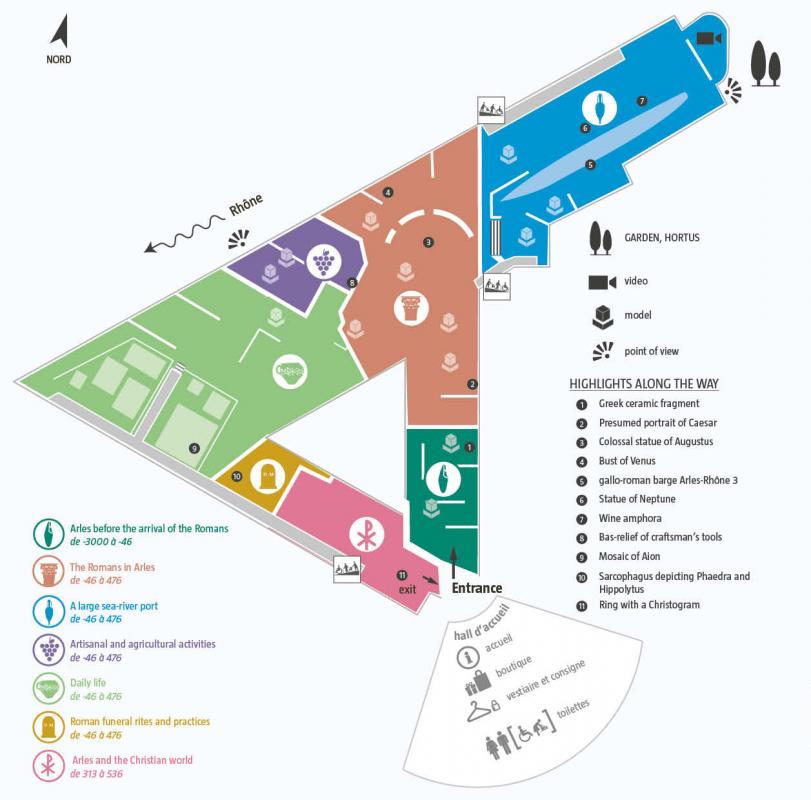
Arles before the arrival of the Romans
///// 3000 à - 46
The territory of Arles was already fully inhabited at the end of the Neolithic period (approximately 2500 BC) as indicated by numerous traces of human occupation (stone tools and rudimentary weapons, fragments of ceramic tableware, jewellery made from seashells and gold…) discovered in hypogea (underground tombs carved into the rock). The city of Arles, with its planned layout, was founded in the 6th century BC. The arrival of the Greeks made the merchant city, situated next to the river, a prosperous commercial centre.
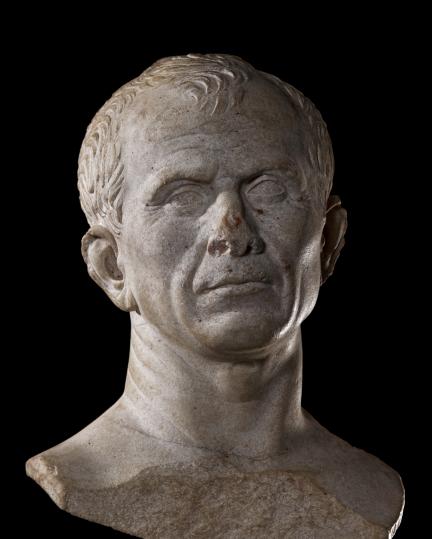
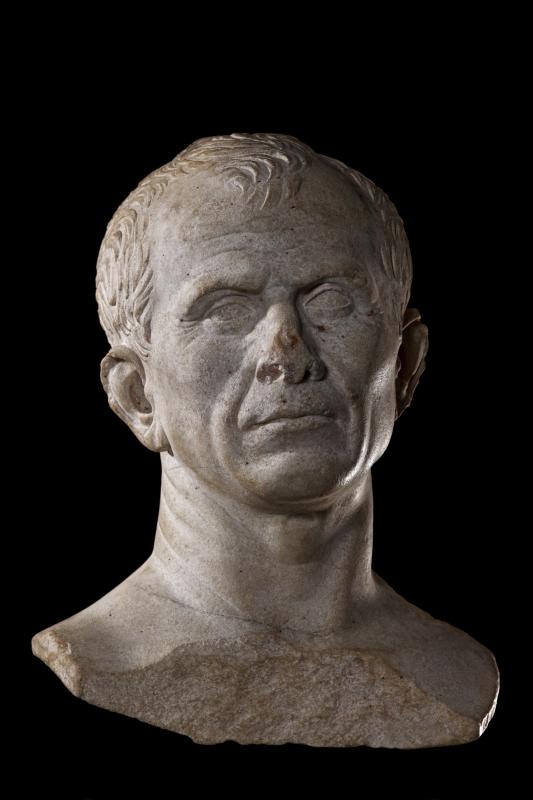
The Romans in Arles
///// - 46 à 476
In 46 BC, Julius Caesar bestowed the privileged status of Roman colony upon the city of Arles where he established the veterans of the sixth legion. Spurred on by these new settlers and taking Rome as a model, the city developed. It quickly became fortified and many public monuments were constructed over the centuries: a forum, a theatre, an amphitheatre and even a circus. These types of structures were common to many of the Roman Empire’s cities.
Highlights : Presumed portrait of Julius Caesar, colossal statue of Augustus, captive and gladiator in bronze // Models: city of Arles in the first century, forum, theatre, amphitheatre, pontoon bridge, and Roman circus.
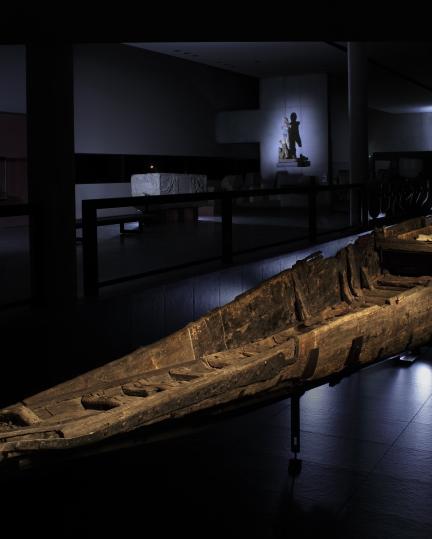
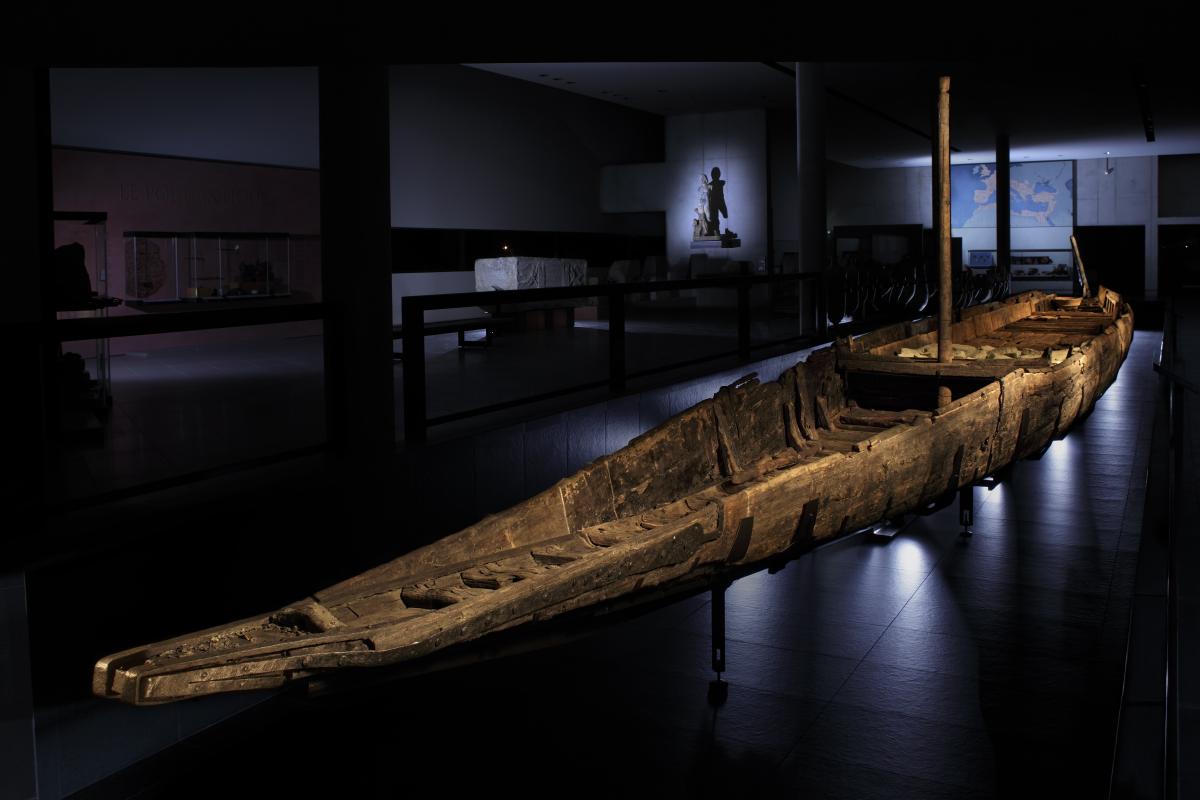
A large sea-river port
///// - 46 à 476
The archaeological artefacts discovered in the Rhône (amphoras, ceramic and bronze tableware, metal ingots and bars…) confirm the importance and the intensity of the commercial trade between the port of Arles, Northern Europe and the rest of the Mediterranean world during the Roman era. Surrounding the exceptional exhibition of the nearly intact wreck of the Gallo-Roman barge Arles-Rhône 3, the themes of navigation and the vocations related to the ancient port are also addressed.
Highlights : Gallo-Roman barge with its cargo, galley gear and equipment, lead ingots, amphoras with painted inscriptions, statue of Neptune, basrelief of packers // Models: excavation of the wreck Arles-Rhône 3, Roman sea-river ship with dolia (enormous jars).
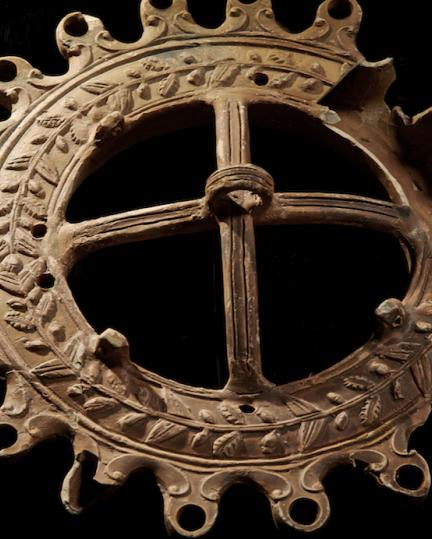
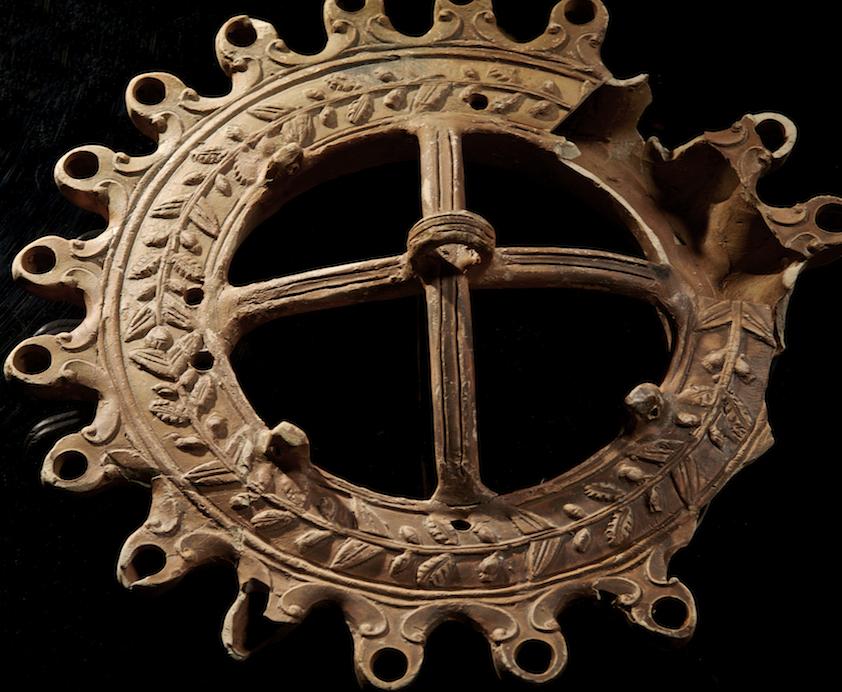
Daily life
///// - 46 à 476
Numerous objects (oil lamps, statuettes of deities, toys, tableware, jewellery, keys…) provide a better understanding of the context and different aspects of daily life for the inhabitants of Arles during the Roman era. Topics such as hygiene, health, the adornment of the body, lighting, cuisine and even religion, with a wide diversity of cults (public, private and imperial) are addressed. Concluding the itinerary, a series of mosaics provides a glimpse of the luxury of certain Roman villas constructed on the right bank of the Rhône.
Highlights : Chandelier with twenty nozzles, kettles, lead plumbing pipes, rings, fibulae (brooches), ophthalmologist seals, statue of Medea, statuette of a faun, mosaic of Aion // Model: Baths of Constantine.
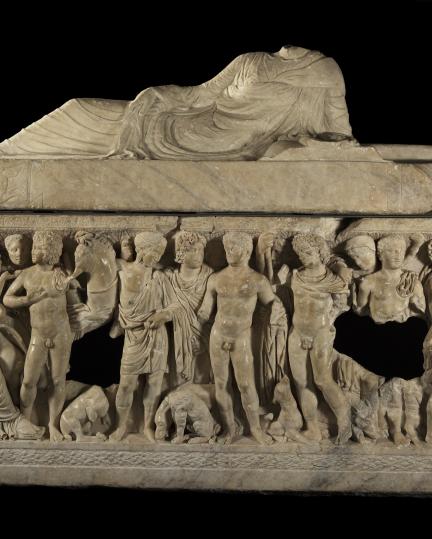
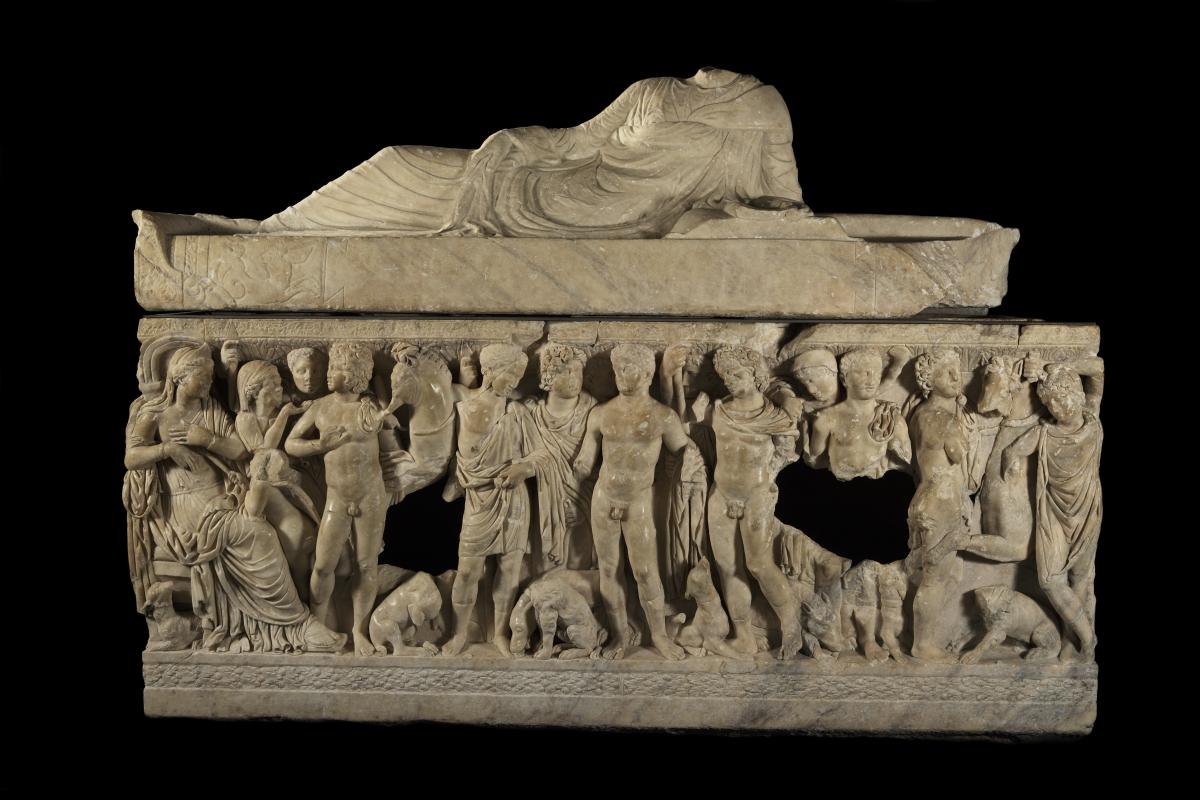
Roman funeral rites and practices
//////- 46 à 476
Arles was surrounded by vast necropolises (literally “cities of the dead”) located outside the ramparts. Initially Romans practiced cremation and depending on the social status of the deceased, remains were typically gathered in urns, ranging from precious or ordinary, before being buried. Funerary steles indicated their locations. Interment truly developed beginning in the 2nd century, as reflected by the sculpted sarcophagi of wealthy families. They were either placed in the ground or in mausoleums.
Highlights : Cinerary urns with grave goods, sarcophagus depicting Phaedra and Hippolytus, sarcophagus depicting the Dioscuri.
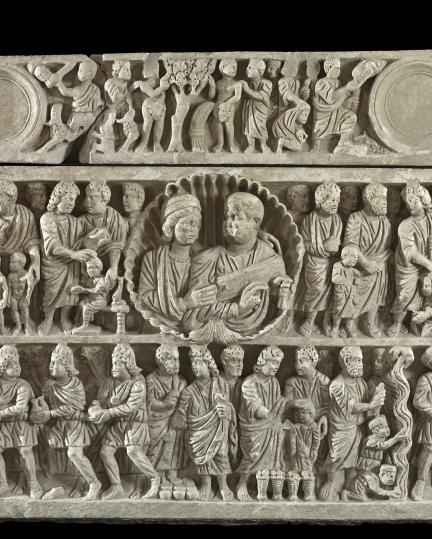
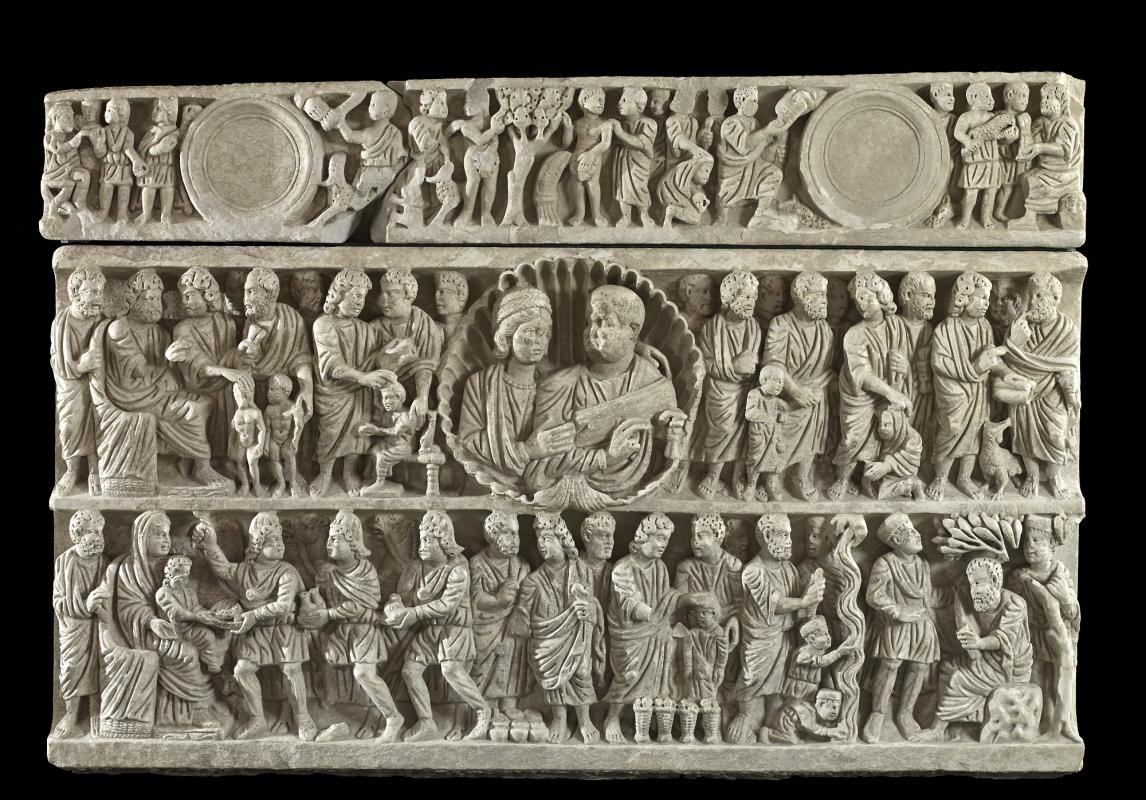
Arles and the Christian world
/////// - 313 à 536
By the late fourth century, Arles became a political and religious centre that influenced the rest of Roman Gaul. The gradual establishment of the Christian faith in the city is reflected by the increased number of sarcophagi and everyday items (oil lamps, dishes…) decorated with Christian motifs (Latin cross, fish, Christogram…) or scenes from the Old and New Testament.
Highlights : Sarcophagus of the spouses, sarcophagus depicting Jesus presenting the Law to Peter, pilgrim flask (ampulla) depicting Saint Menas, ring decorated with a Christogram (Chi Rho).
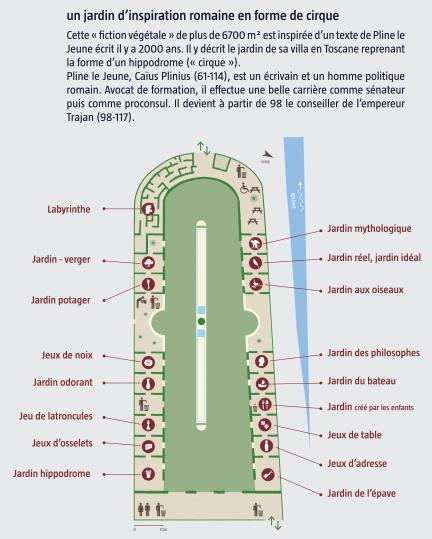
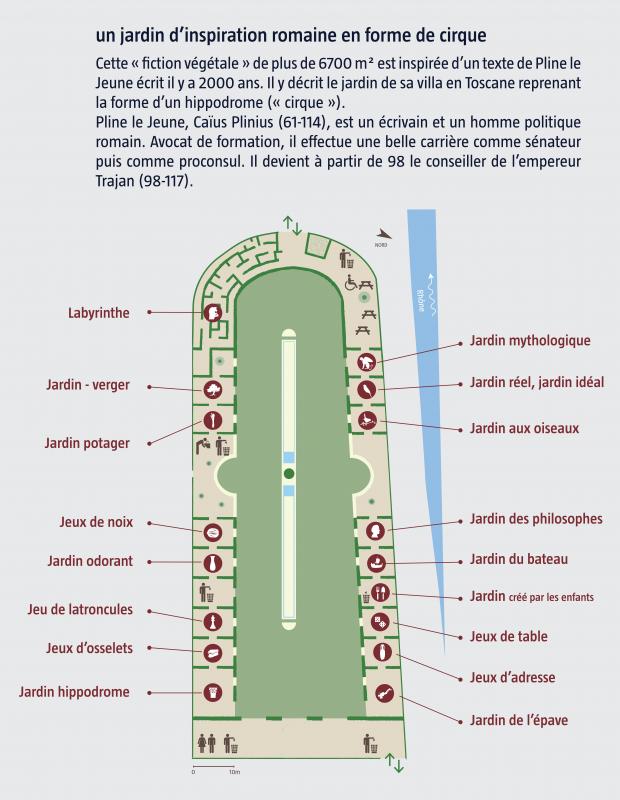
Hortus: The museum garden
////// 2007 .....
Built close to the ancient remains of the Roman circus, it constitutes in the city a green link of more than 6000 m² between the old centre of Arles and the museum. It is inspired by a text written 2,000 years ago by Pliny the Younger, which evokes the garden of a luxurious villa. The famous writer describes it as a “large racecourse garden” also known as a “circus” in ancient times. The Hortus Garden is both an allusion to the text and a way of recalling the presence of this large building that has disappeared since late Antiquity. It is organised in the manner of a circus and its main ensembles: the thematic gardens represent the terraces, the lawn of the promenade evokes the racecourse track in the centre of which is the spina, a low wall several metres wide, which was decorated with basins, statues and obelisks. The visit itinerary alternates between themed discovery sites, relaxation and rest areas and ancient model-based play areas.
Conceived in 2007 on the occasion of a vast European project supported by Chambre de Commerce et d’Industrie du Pays d’Arles, the Hortus* public garden was created in 2010 thanks to a collaboration between the museum, Etablissement public local d’enseignement agricole of Saint-Rémy-de-Provence, two private companies (Arkheïa and l’Esprit des jardins) and ESAT Les Abeilles (Structure for integration of disabled people through work).
*Hortus: Latin word for garden.
Rich archaeological collections in a resolutely contemporary building
In 1983, architect Henri Ciriani designed the plans for this museum. Located near the ancient Roman circus, it was intended to unite collections previously dispersed in three separate locations. Its triangular structure, with clean lines, is visible from afar. The blue façade is a reminder that the sky remains the only thing intangible
since Antiquity.
Research, exhibitions and cultural programming
Originally a municipal museum, the tutelage of the Département des Bouches-du-Rhône since 2003 has given it new impetus. Boasting an auditorium and a Roman-inspired garden (Hortus), the museum fulfils a trifold scientific mission: curatorial, cultural and pedagogic.
An extension dedicated to the sea-river port
Arelate owed its fortune to its proximity to the Rhône. The riverbed near the right bank was the subject of recent underwater excavations of by archaeologists-divers. The resulting discoveries include a sumptuous portrait presumed to be Caesar, marble statues and gilded bronzes. In 2013, an entire barge dating from 50-60 AD was installed in a new wing of the museum.
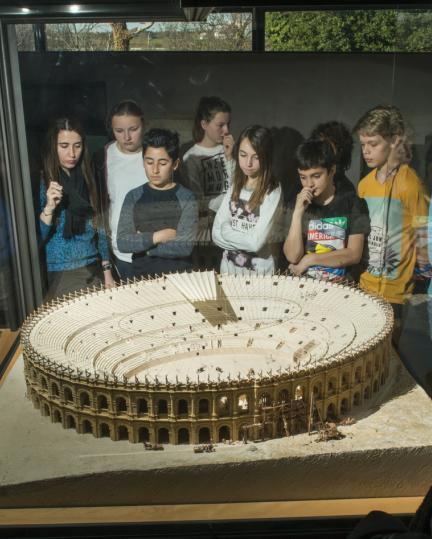
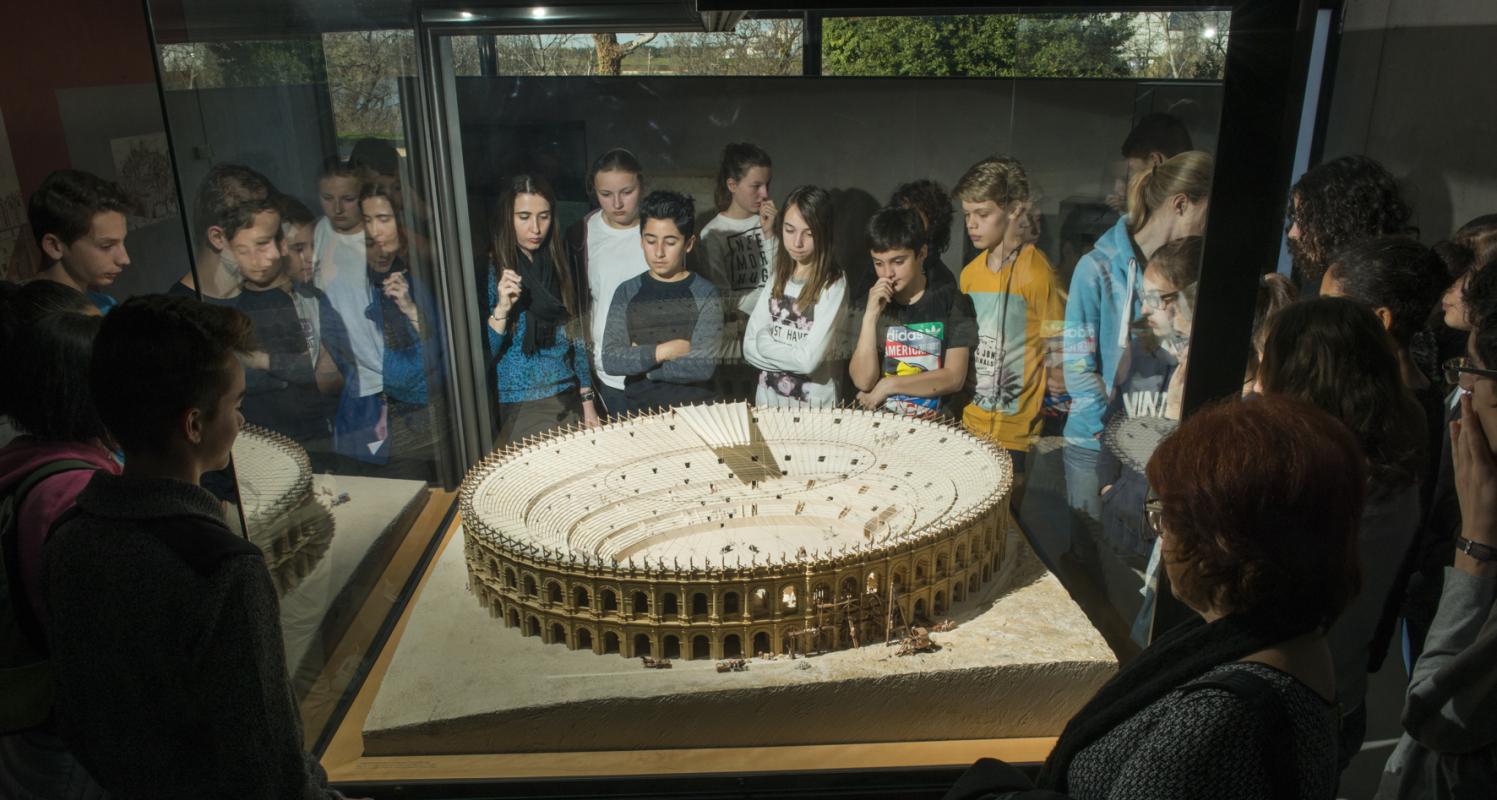
A museum for deciphering the Arles of Antiquity
A museum is not just a collection of beautiful objects. Its mission is to facilitate the discovery and understanding of the past. How did the Romans live? What gods did they worship? What were their daily activities? The itinerary through the exhibition galleries - both chronological and thematic - has been thoughtfully designed to address these questions. Impressively accurate models recreate the Roman monuments in their original state and entice visitors to explore them in the historic centre of Arles.
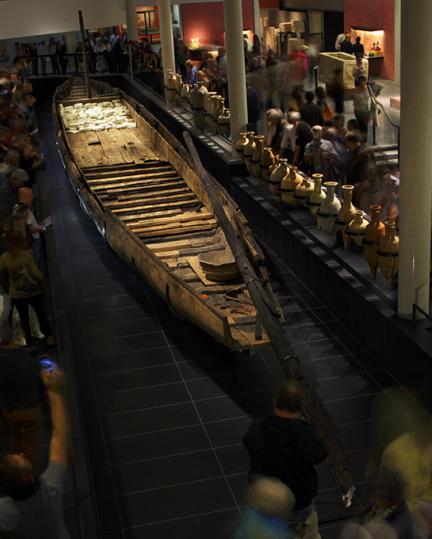
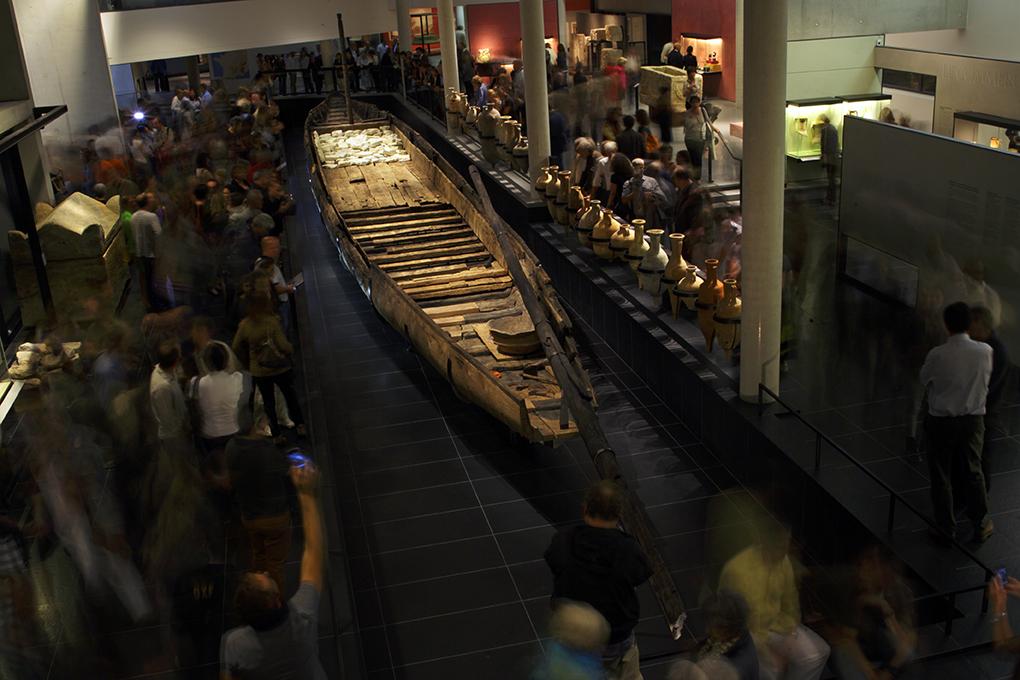
Exceptional collections
Classical sculptures from antiquity including a bust identified as Julius Caesar accompany ,a remarkable collection of more than 1,700 objects from daily life and an impressive Roman barge, raised from the
waters of the Rhône in 2011. Surrounding this 31-metre vessel (know as “Arles-Rhône 3”), more than 450 objects found in the maritime, river and surrounding areas of Arles evoke navigation, trade and the port; invaluable evidence of the city’s economic activity during the Roman period.
A museum accessible to all
A concerted effort has been made regarding accessibility. Tours tailored to a variety of needs facilitate access to the museum for all visitors: guided tours of the permanent collections and temporary exhibitions, conferences, workshops, classes, performances…encourage an exploration of the museum adapted for each visitor. Emphasis is placed on welcoming audiences less familiar with museums and people with disabilities.
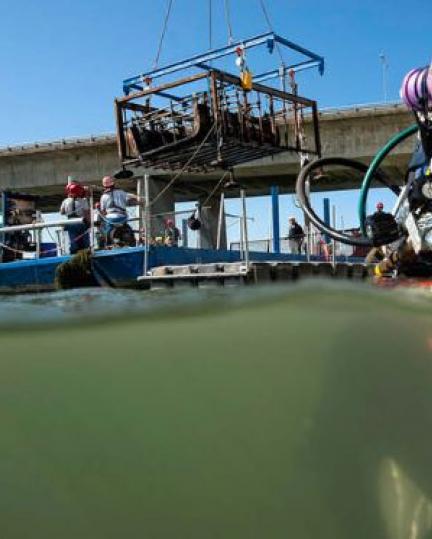

From excavation to the public
Spanning more than 10,000 m², it is the entire archaeological discipline that is addressed by the museum’s team of specialists: archaeologists, conservator-restorers, curators, mediators, reception staff, communication officers…
The activities organised by the museum offer the widest possible audience a living vision of archaeology, promoting exchanges between the public and professionals. The latter highlight the museum’s collections, which are enriched every year by ongoing excavations. Following the treasures recovered from the depths of the Rhône, exceptional Roman paintings were uncovered in 2014 on the site of a former glass factory, the Verrerie de Trinquetaille.
Practical information
Phone: 04 13 31 51 03
info.mdaa@departement13.fr
Open daily from 10am to 6pm, except Tuesdays
Closing days: January 1, May 1, November 1 and December 25.
RATES
Permanent collections + exhibition: €8- €5*
* REDUCED RATE
Groups (+10 persons), over 65 years, cardholders:
Solidarité 13 Assistance (Leisure organisation for the over 55) - large families - adult accompanying a holder of the "Collégien de Provence" card – holders of the Provence Prestige ticket for the duration of the fair
FREE
Under 18, job seekers, RSA beneficiaries, disabled persons, students, education pass teachers, journalists, museum curators, ICOM card, staff from the Ministry of Culture, guides of the Caisse nationale des Monuments historiques, Pass my Provence ambassadors, “friends of Ancient Arles” members.
FREE ADMISSION ON THE FIRST SUNDAY OF EVERY MONTH.
INDIVIDUAL GUIDED TOURS
All year round: every Sunday at 3pm.
Rates: €3 in addition to the entrance ticket, without reservation.
Thematic visits: Two Sundays per month, at 11am. €3 in addition to the entrance ticket.
GUIDED TOURS FOR GROUPS
Reservation required at 04 13 31 51 48
BECOME A MEMBER OF THE MUSEUM
Rates: €15 renewable annual subscription.
- Unlimited access to permanent collections and temporary exhibitions (priority queue)
- Free access to guided tours
- Invitations to opening ceremonies, sending out the activities program and the monthly newsletter …
SERVICES
- Bookshop-museum shop (museum opening hours )
- Free consignment
- Loans of wheelchairs and walking stick chairs
- Baby changing table
- Relaxation areas in the museum and the Hortus garden
- Hot / cold drinks and snack dispensers
- Picnic area: picnic tables near the museum along the Rhone and in the Hortus garden.
- Free museum car park: cars, 5 bus places, places reserved for the handicapped.
- Bicycle shelter.
ACCESS TO THE MUSEUM
With the Viarelate 100% electric shuttle
Route of the line: Departmental Museum of Ancient Arles – Town centre – LUMA tower – Minimes car park
One bus every 16 minutes from Monday to Sunday (except Sundays and public holidays from November 2 to March 31 and on May 1)
Rate: €1 unit per ticket and €2.50 per day pass
Hopla! old centre, free bicycle shuttle from the town centre
There is also a free bicycle shuttle in the old centre. There is a departure every 10 minutes from Clemenceau with service to the old centre of Arles.
Schedules and information about the Envia network: www.tout-envia.com
